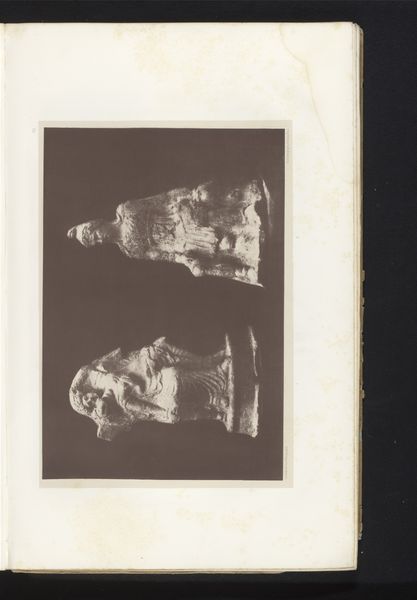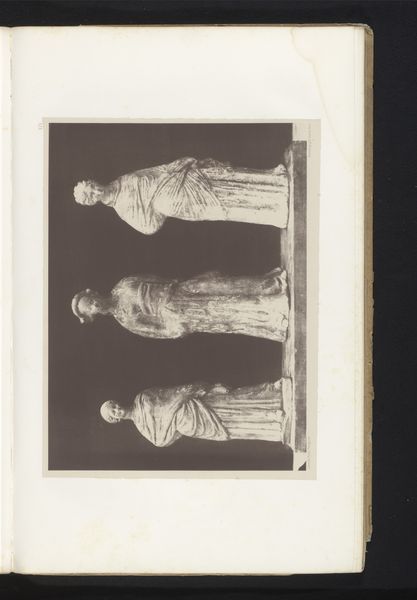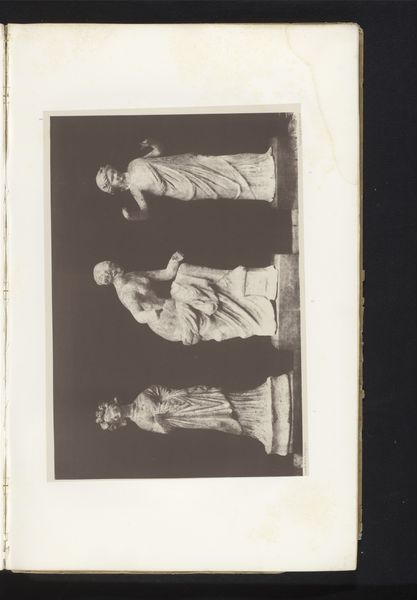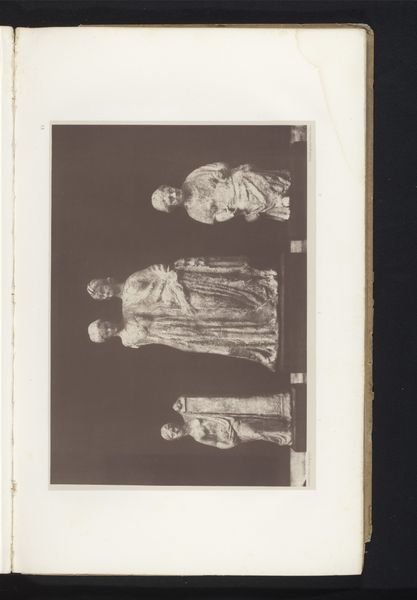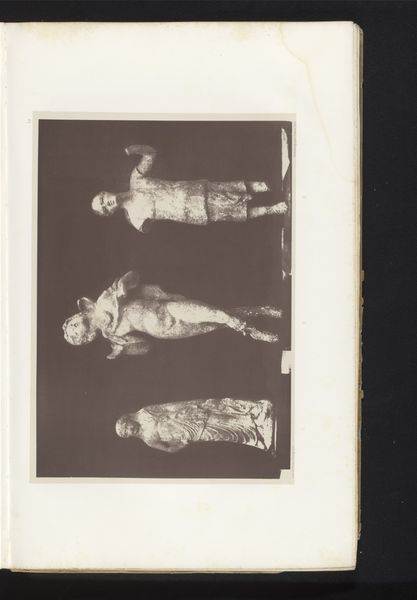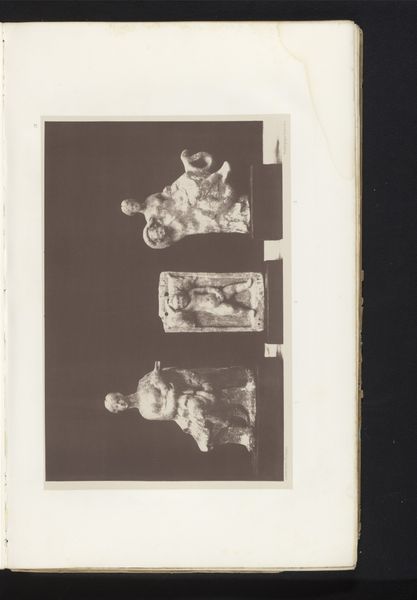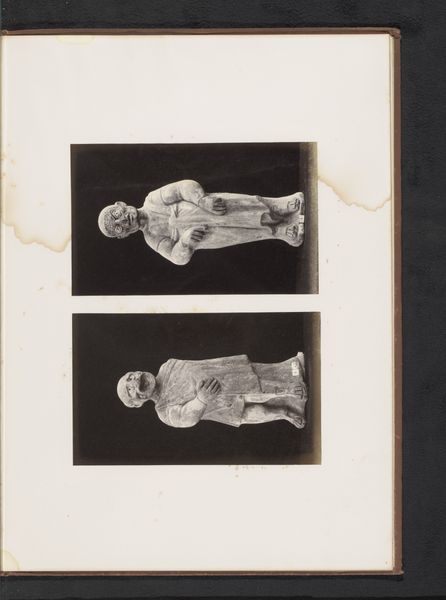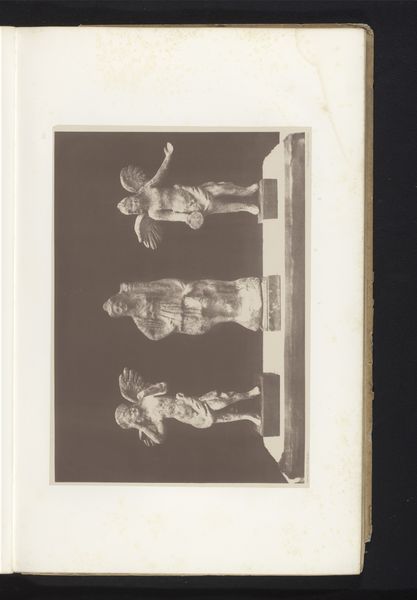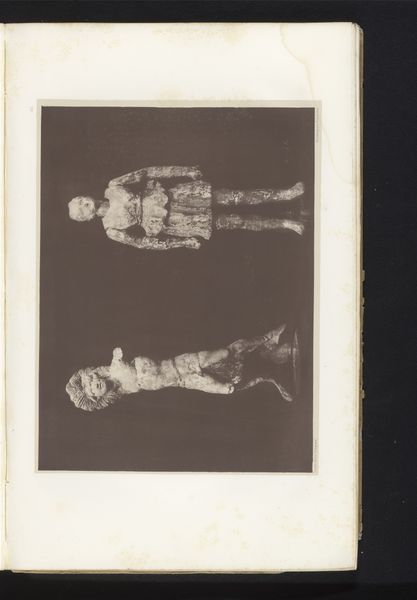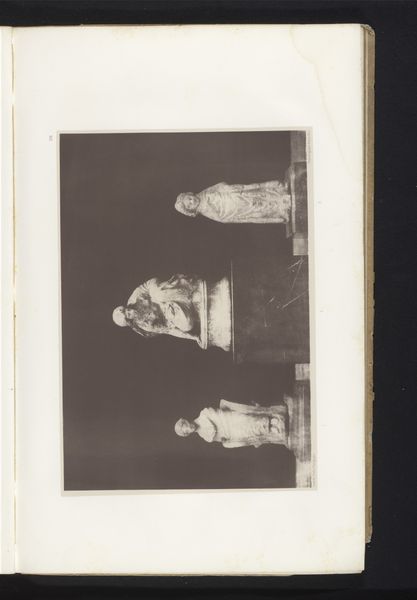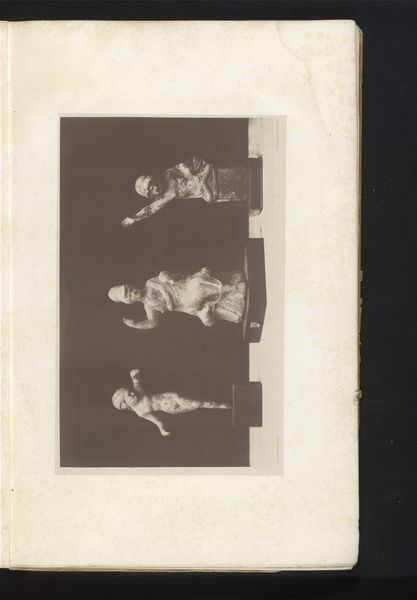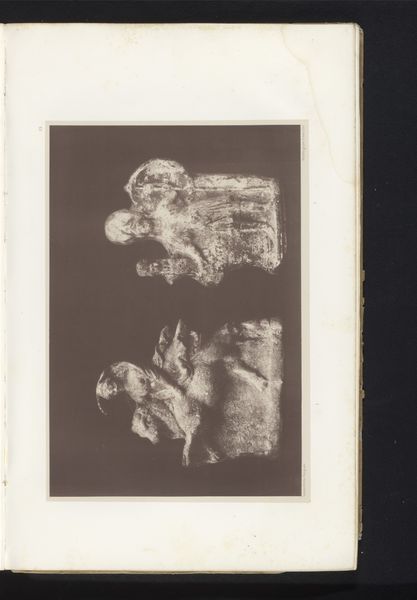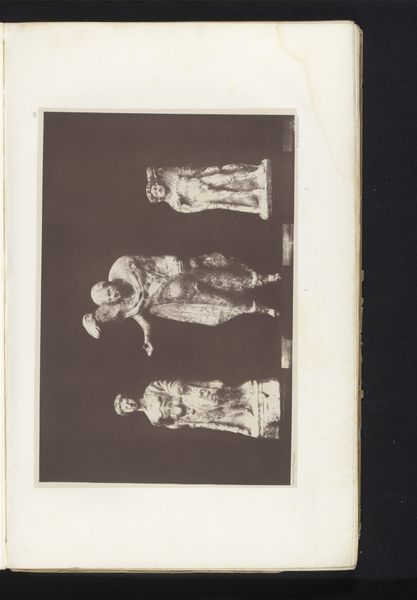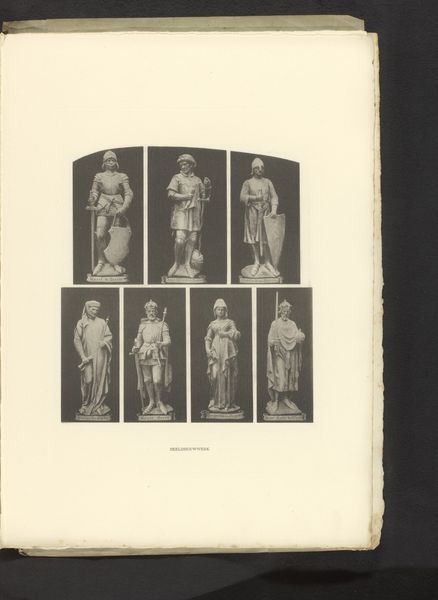
photography, sculpture, terracotta
#
portrait
#
sculpture
#
figuration
#
photography
#
ancient-mediterranean
#
sculpture
#
terracotta
#
statue
Dimensions: height 253 mm, width 335 mm
Copyright: Rijks Museum: Open Domain
Editor: This is a photograph of two terracotta sculptures titled "Twee terracotta sculpturen van Hebe en Proserpina" made before 1857 by Marcel Gustave Laverdet. I find the subdued palette really intriguing; the photograph mutes the potential vibrancy of terracotta and presents a more historical perspective. What are your thoughts? Curator: My mind immediately leaps to the role of classical sculpture within the power structures of the 19th century. The reproduction of Greek and Roman deities—in this case Hebe, goddess of youth, and Proserpina, queen of the underworld—was deeply connected to ideas of ideal beauty and European identity. These were used to legitimize certain social orders. Consider how these figures, rendered in terracotta and disseminated through photography, functioned within a system that often excluded and marginalized those who didn't fit this classical "ideal". How might the circulation of such images affect ideas around race and gender at the time? Editor: That's fascinating. I hadn’t thought about how the *reproduction* of classical figures would have affected societal views in such a tangible way. I was too focused on their traditional mythological meanings. Curator: Exactly! It’s important to think about how the choice to represent these goddesses in a specific medium, and then further disseminate them via photography, speaks to the cultural values and power dynamics of the 19th century. Laverdet, through his choice of subject and the way it was replicated, engaged directly, even if unintentionally, in the construction of certain visual and societal norms. Editor: So, this photograph isn't just a record of sculptures, but a cultural artifact that participates in constructing ideals and hierarchies. I never thought I would think of old pictures that way. Curator: Precisely. Understanding the artwork this way helps us think critically about not just what art represents, but what cultural work it performs.
Comments
No comments
Be the first to comment and join the conversation on the ultimate creative platform.
